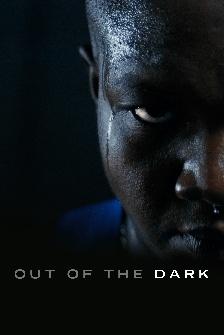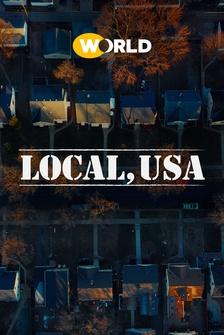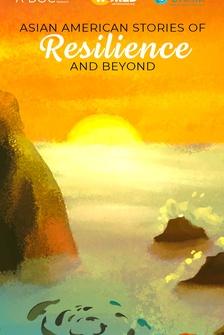- [Rupak] Previously on "Spice Road", I traveled to my wife Nancy's hometown in Virginia to see how South Asians and Southerners have found powerful ways to coexist in the face of adversity.
But now I'm going back to my own roots.
There's my personal past and my ancestral past.
And for me, New York and New Jersey are the nexus of the two.
Multiple times a year, my folks packed us in our Volkswagen Vanagon and then drove from New York down the turnpike to meet up with fellow Bengalis, Indians from the eastern state of Bengal.
But while my dad is from Bengal, my mom is actually from another state in the west of India called Maharashtra.
And in honor of her, today I'm heading to a spot in Edison, New Jersey that features cuisine specifically from her part of the old country.
(energetic music) (bell dings) (projector running) In the 1980s, Edison was a down on its luck Jersey town.
But over the last 30 years, immigrants have transformed the town into a vital economic engine for the region, and a thriving hub for the South Asian community.
And with the South Asian population now accounting for nearly a third of all Edison residents, the desire for the community to reconnect with their roots through authentic regional cuisine is rising too.
Enter the restaurant I'm visiting today, Mejwaani, which literally means feast in Marathi, the language of Maharashtra.
(upbeat music) Nish!
- Hey Rupak, how are you?
- I'm great, I'm here.
- Man.
- Wait where's... Supriya!
- How are you?
- I'm better now.
As I walked in here, I was just blown away by all the colors and the artwork.
Can you describe that a little bit?
- These are the Maharashtrian ladies.
One is the wedding lady, the other is Puja, because we cater for these kind of occasions.
- And why red and yellow?
- When we welcome any women we put the haldi and kumkum on their forehead.
- My mother is Maharashtrian.
- Oh wow.
- So this has extreme resonance for me.
- So would you like to learn a few things?
Because I am a Maharashtrian.
- Are you gonna teach me how to make something?
- Yes, absolutely.
- What are we gonna make?
- We'll make puran polis and modaks, which are Maharashtrian delicacies.
- My grandmother, I would go over to her house in Pune and that's literally what she would serve me.
- I know.
- Let's do it!
- Yes, absolutely, let's go.
- All right.
(projector running) (laid back music) - It looks like we have two setups here.
What is it?
- Yes, this is the puran poli, and this is the modak.
- Modak, okay.
- So first I'm going to teach you how to make modak.
- Modak.
- So this is steamed rice flour, so to make small balls, this is jaggery and coconut.
- Jaggery and coconut, and jaggery for folks who don't know is?
- Much more healthier.
- It's unrefined cane sugar.
- Exactly.
This is how you make a ball.
Make as thin as you can so that it taste better.
Take some stuffing and then you have to shape it like a flower, ok?
- Oh.
- Slowly you have to bring all this together.
- Pinch it at the top there, huh?
- Yes.
Look here.
- Oh, gorgeous.
All right, I'm gonna try.
- You have to steam it.
- So now, stuff it.
- The more you stuff it, then you pinch it like a flower.
- Oh this is the- - That's the technique.
- That's the technique.
Oh my gosh.
- Not bad.
- And then what?
Then pinch it at the top.
- Yes.
- Excellent.
- So you want to steam this for 10 minutes.
- And then offer it to Lord Ganesh.
- It's a favorite food for Ganesha.
- It's soon about to be my favorite food I have a feeling.
- Yeah, sure, sure.
(laid back music) Just garnish it with some strings of saffron.
- Okay.
- And have a bite.
- Mm.
Mm!
The outside is so nice and chewy.
- I know, correct.
- And soft, that is amazing.
- You can have all of it.
- I'm going to have all, then I'll get the belly like Ganesh too.
- I'm going to teach you how to make puran poli.
- Okay.
- So this is all purpose flour.
These are the dumplings, chana dal and jaggery.
- Okay.
- Flatten it.
- Flatten it.
- Take one ball.
- Okay.
- And stuff it.
- Gotta get all the way around, huh?
- And whatever the extra, you can just- - Just pinch it off.
Okay.
- Yes.
- Great.
- And then you have to roll it.
- You got that perfect circle action.
I gotta catch up with you.
- It's okay, no worries.
- It's more like an amoeba.
This is what you could show in like 9th grade biology class.
- And this is, you have to roast.
- Look at this, beautiful.
Mm.
I just landed in the streets of Pune, Maharashtra.
I'm at my grandmother's house and I'm eating that authentic puran poli, which I've never had in this country.
- I know.
- Thank you for teaching me how to make these dishes.
- Thank you so much.
- It reminds me of my ancient past, my grandparents and their ancestors.
Let me explain some basic stuff about Indian regions and why this place is so unique.
(upbeat music) Like the US, India is made up of many states.
Up until only a couple hundred years ago, when British colonialism forcibly brought all of India under one rule, the Indian states were often separate kingdoms with their own highly individualized customs, language, and of course food.
When it comes to Indian food in America, however, many people are only familiar with cuisine from the northern states of India.
I'm talking about things like your tandooris, tikkas, and naans here, which don't get me wrong, can be pure heaven to eat.
But they're only one part of a very diverse culinary tradition.
So this is an appetizer, and when do people eat it?
Is it street food?
Is it at home?
- It's basically a street food.
Which is commonly sold in Mumbai.
- This is the vada, is the inside part.
- Yes, this is the vada.
- And what's in here?
- There is a green chutney plus you can add a pinch of this dry garlic chutney, which is a little bit of spice.
- And then this is the pav, this bread.
Vada pav.
Great.
That's easy.
(nostalgic music) I am on the streets of Mumbai.
You've replicated that, congratulations.
- Thank you.
- Mm!
You used to work in a bank I understand, and then at some point you said, "I'm done with that, I want to start a restaurant."
How did that happen?
- I loved cooking from the beginning.
My mom, she was housewife and she used to cook all day long.
Like she used to love cooking.
And those genes maybe were in me.
I used to cook for my friends at work and they used to say, "Oh, it's so delicious, why don't you open a restaurant?"
And then we started this basically for the students who are missing their own kind of food back home.
So there are so many people who are aged 55 and 60, they come here and they say it reminds me of my grandmother.
And those kinds of words make me feel very satisfying.
- What makes Maharashtrian food stand out from all the other cuisines of India?
- Being a coastal food.
There is a lot of coconut available, the whole base is around coconut, so how can you put more and more coconut to make the food more and more tasty?
Every item, every dish that you prepare has got different spices.
The spices needs to be put fresh, the vegetable needs to be cut fresh, there's nothing like a frozen Maharashtrian food.
- (laughs) We can't, we're not gonna walk down the freezer aisle and get Mejwaani anytime soon, okay.
(projector running) (laid back music) (upbeat music) - Paan is a common after-meal treat that's enjoyed by millions of South Asians and has been around for thousands of years.
So you're gonna make it and I'm going to eat it.
Its key ingredient is betel nut, which is said to have stimulant effects, though many consumed paan as a post-meal mouth freshener.
- One more for this, for my brother here.
- You guys want one?
- If you've never had it, the first few chews may feel overwhelming, unlike anything you've ever had.
- But just keep chewing.
Things will settle down once that good old mastication gets into gear.
- It's good, it's intense.
(director laughs) - He's like, I'm on camera right now.
- Despite the fact that this is Edison, New Jersey, which has this huge South Asian population, we still have such little representation of the diversity within South Asia.
To have a restaurant like Mejwaani serving up authentic Maharashtrian cuisine, it's so rare.
So much respect for those owners, Supriya and Nish, to have the courage to do that.
We're not this monolith.
We have so many colors and such range.
Like other immigrant communities around the world, Edison has been challenged to fully embrace its own diversity.
In the summer of 2022, the appearance of bulldozers at the Indian Independence Day parade ignited a firestorm of controversy that forced organizers and the town to apologize.
In India, where minority neighborhoods have been targeted for demolition by hardline politicians, bulldozers have become a symbol of persecution.
The incident reminded me that if we're to survive the existential challenges of the 21st century we will all have to recommit to the principles of democracy and community.
(slow upbeat music) I'm keen to eat some more Maharashtrian delights, and I'm particularly excited to do it today because I get to share them with my friend Sheetal Sheth.
Sheetal is an actor, writer, activist, and absolute creative force of nature.
Her latest children's book "Making Happy", touched me to the core, and I'm glad I have a chance to talk to her about it, and life in general while we chow down.
- Hey, look at what we have here.
- Yay.
- What is this?
- This is the onion pakoras.
- Yes.
- Ah.
- And this is the kothimbir vadi for you.
- This is another Maharashtrian- - Maharashtrian specialty.
- Specifically- - So what is that?
- Yeah.
Describe that please.
- So this is a chickpea flour that is mixed with cilantro.
It's steamed with the right spices, and then again, shallow fried.
- Mm.
It's a lovely snack.
- But I feel like I've had this before, 'cause it tastes very familiar.
- It might be something similar to Gujarati- - But maybe it was in a different shape.
Onion rings!
- Onion rings, that's right, but- - Hundred times better.
- This is so good.
- I love pakora or as a Gujarati we call it, bhajia.
Anything fried.
- Anything fried!
(Sheetal laughs) But what's lovely about it is it's got a sort of delicate fried-ness, right?
Because the thin strips of onion, beautifully battered, and so delightfully crispy.
So I wanna talk a little bit about your book and it's about your journey with cancer, and you're thankfully a survivor.
What was the impetus for you putting your experience into the children's book format?
- I was diagnosed with cancer, no one wants to hear that, your world feels like it's shattering and falling into so many different pieces and all these things are going on, and my kids were 2 and 4, I mean, babies.
And I love books as ways of kind of starting conversations and opening up things, icebreakers, whatever it may be, to allow for conversations.
And so I was looking for children's books that dealt with illness, or death, or grief, and I couldn't find any.
And so I wrote the book that I hoped I had found when I was going through cancer.
And it's really very much about what goes on when your family's going through a hard time.
And it was a way to give kids permission to have whatever feelings they're having.
- When you have cancer and when you're going through chemotherapy you can't eat much, right?
- You can't taste, you lose your taste buds.
So I was not enjoying my meals.
During chemo my mom came and stayed with us 'cause again, my kids were babies.
I'd had a major surgery, I had a double mastectomy, I wasn't able to pick up my kids.
I was like, mom, just whatever you can do, like add it.
And so Indian food was probably the only cuisine that I could even taste a little bit of, it was so numb to anything in my mouth that it really did save me.
(Sheetal laughs) - Wow.
- I learned about the things that I liked that were nourishing so when I was going through chemo my mom would make those things.
After my double mastectomy, which I was in the hospital, what I craved, there's this thing called Channa Chor, it's like a snack street food.
We took that with, with pomegranate, kanda, cilantro, and chaat masala, and we mix it up.
It's like a little salad, but it's delicious and it's spicy.
And that's what I had.
- And it got you to eat.
- It got me to eat.
- Most important, at that very difficult time in your life.
I love it.
I love it.
- Yes.
Yes.
(laid back music) - I learned how to make these yesterday, I'm excited for you to try this.
- They look like little dumplings.
- If you can handle ghee, just pour the ghee on that, it melts, and it adds to the taste.
- Tiny little drop.
- All right.
There we go, boom.
- There we go.
- Yeah, here we go.
- That is very rich.
- I made this yesterday, and I had some yesterday, and I can't get enough.
- I like that you're like savoring it.
- I do.
I do.
- And tasting every part of it.
- I have a sweet tooth.
You being here with me sharing this food, I can't thank you enough.
- Oh.
- Yeah.
- It was my pleasure.
Are you kidding me?
First I get to spend time with you, and you feed me.
- I'm coming over to your place next- - Yes, anytime.
- And you're gonna feed me.
- Bring the family.
(laid back music) (upbeat music) - My parents are what's known in India as a love match, as opposed to an arranged marriage.
The story goes that they met in med school in New Delhi over a dead body, you know, in class.
I've seen enough of the world to know how lucky I am to have them as my parents specifically.
And these days when I see them, it's hard not to think of the struggles they went through and the sacrifices they made in order for me to feel that way.
Touching the feet of one's elder relatives is a Hindu custom to show respect and receive their blessings.
It's a ritual and a connection to my past that I treasure and I'm proud to pass on to my children.
All right, the moment has arrived.
I'm here with the master chef, my mother, what are we making?
- We're making a dessert called Rasgulla.
- It's a specialty of the Bengal region.
- Yeah.
- And ras or rus means juice.
Gulla means ball.
And Rasgulla which means- - The juicy ball.
- Yeah.
(buzzer sounds) - We are going to make freshly curdled cheese.
I'm using a low flame, this is two cups of buttermilk.
It's acidic, so it's going to curdle the milk.
- You're making the paneer cheese, or chhana in Bangla, to make these delightful balls that we're then gonna dip in an even more delightful sweet syrup.
So now we're gonna pressure cook it, right?
Is that the plan?
Okay.
- Yeah.
Yeah.
So now we're switching to a savory snack dish from Maharashtra which is what?
- Sabudana Khichdi.
- This is sabudana, aka tapioca.
It's actually quite hard when you buy it in the store, so you have to soak and get it nice and soft and chewy and starchy and it's delicious, but it doesn't have any flavor of its own.
You have to mix it with spices and other yummy things like potatoes, coconut here, remember that's a very Maharashtra thing as we learned at Mejwaani.
Cilantro, roasted cashews, lemons, because it adds a nice tang to it.
- Lemon juice.
- Lemon juice.
Last but not least, add green chilies because we're desi, we like things spicy.
Some of my best memories is actually cooking with you, learning how to cook with you.
- It was very nice for me to have you there in the kitchen.
If we didn't do it, it would be lost.
- What did you think of the cuisine when you first came to the US?
- First thing I had was donuts.
(both laughing) Which I thought were the best thing in the world.
- This is a really cool thing when I first started learning from her how to make Indian food is that you fry your spices.
- Kind of releases all the oils in the stuff.
- That was my favorite too, coming home from school, and then you would come home from work, and then the smells of the tarka.
- (laughs) Yes.
- Of the frying spices filled the house and I felt so comforted.
- That's because I used to serve quite late, by the time- - Well, you were working a full-time job.
Now I look at what I'm doing with my kids, and I'm going, oh my gosh, she worked, you were saving babies as a neonatologist, as a doctor, and then coming home and cooking a full meal, it's incredible.
(pan sizzling) Add the curry leaves.
Get ready.
Potato?
Oh that looks good already.
We could just eat that.
(laughs) (gentle music) Mm.
(gentle music continues) All right.
- Oh there he is.
- Now we feast.
Mm, daroon.
Daroon is Bangla for amazing.
(bell dings) So good.
You being Maharashtra, you being Bengali, I'm just curious what your families thought of each other when you decided to get married?
- We wanted to discover sabudana khichdi, and she wanted to discover roshogolla.
Her parents approved of me right away.
(laughs) I found the Maharashtrian food quite novel.
From where I come, which is the Bengali style of cooking, the curries tend to run, they add more water.
Where mommy comes from, which is the western part of India, is more arid, the food there is somewhat drier.
And that took me a while because you know you eat it with breads, with chapatis, and you know, the tortilla equivalents.
- In Bengal, they use mustard oil.
- Hmm.
- Hmm.
- Which is very delicious pungency.
In Maharashtra, it's either sesame oil or peanut oil, or another one.
- Interesting.
- A great deal of fish in Bengali cooking, what I saw, that shrimp was added to lentils.
- You were quite shocked with this.
- And fish was added also to lentils.
- What was I like with Indian food as a child?
- I only remember you eating Sugar Pops.
(laughs) - You used to complain because I brought sugar free cereals.
- Right.
- And you would say, "I don't want to see the word healthy on the-" - I would say that?
- "On the cereal packet."
And you had rice, and lentils, and vegetables, which you were forced to have.
- See, I remember liking the food.
- No, no.
I don't remember you protesting.
- My issue was that I couldn't share it outside of the house, I couldn't talk about it.
I couldn't go to my friends and be like, "Hey, I had this great chicken curry last night."
- I know.
- I think you grew into it, kind of.
- That's exactly right.
That's my... so my memory is exactly that.
I was neutral, I was neither yay nor nay.
It's what I grew up with, so I didn't have a choice.
And then I went to college and I didn't have any of the home cooked treats really, that I was used to.
And then I remember coming back and just tearing into the food you made.
And that's when I realized that this is my food.
This is who I am.
- The same thing happened to me when I went to college.
I didn't much care for home cooking.
I was always craving the food being offered in restaurants and you know, dhabas.
But once I did actually go to college, and then I realized what my mother was cooking was so wonderful, I came back craving it.
- They had minimal ingredients.
Whatever vegetable they could afford in the market, they had to make it tasty.
- When I compare the experiences we've had with our mothers the kinds of things I've tasted are just outstandingly unique.
- Yeah.
I just feel very grateful that you are my parents.
I'm realizing how spoiled I am.
And I'm so spoiled that I'm going to ask for two or three more roshogollas right now, because one was a little stingy.
(soft music) (soft music continues) These few blocks, all the way from Harlem down to the Columbia University area, were once my entire universe.
You couldn't tell me there was anything outside of this square mile that mattered.
Even now, I feel myself being lulled back into the warm comfort of my past, both familial and ancestral.
The roshogollas of home, the puran polis of Mejwaani, I could stay here and eat these forever in the grand company of my parents.
But I know my journey must move forward, to the future.
The same feeling my parents probably had back in the 1970s when they took the leap to come here.
The fact is, I'm 3,000 miles from my actual home, from my wife and kids, my future.
Los Angeles is calling to me, and luckily there's a spot I found out there that makes desi street food that is apparently out of this world.
So it looks like I have my next destination.
I'll see you there.
(projector running) (energetic music) (energetic music continues)









